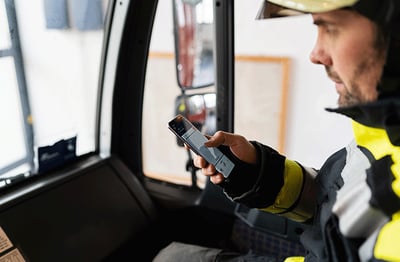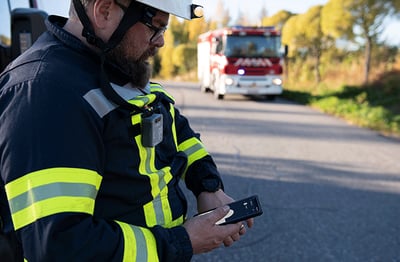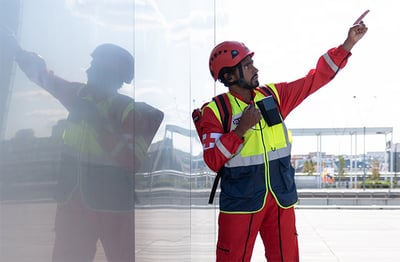In 2020, the fifth consecutive Airbus survey into the state of professional apps gathered insights from hundreds of professionals like yourself. The survey identified how your peers adopt apps, and this year’s report reveals their priorities, challenges and plans as well. What were the key findings? Let’s find out.
With five surveys’ worth of data in hand, we can see that every year, a higher percentage of professionals use mobile apps. Their apps adoption is slowly becoming more structured. We can also see that although group messaging, email and/or calendar and field commanding/situational awareness in the field continue to provide the most potential use cases for mobile apps, some new technologies, such as Virtual or Augmented Reality and Artificial Intelligence are gradually emerging.
But these were just a few of the findings of the fifth annual Airbus mobile apps survey in 2020, when we asked over 500 people for their views.
Each year, the survey questions are designed so that we can identify trends and uncover weak signals. The 2020 report found the following, for example:
- A higher percentage of professionals use mobile apps
- Apps adoption is becoming more structured
- Key use cases remain, but new technologies are emerging
- Two of the three most appreciated app characteristics differ from the requirements of mass market consumers.
Let's take a closer look at each of these findings.
Four interesting findings from the 2020 survey report
1 – A higher percentage of professionals use mobile apps
The survey asked if user organizations are already using apps in daily operations. Around 90% answered ‘yes’ – a 12% increase on 2018 when this question was asked for the first time.
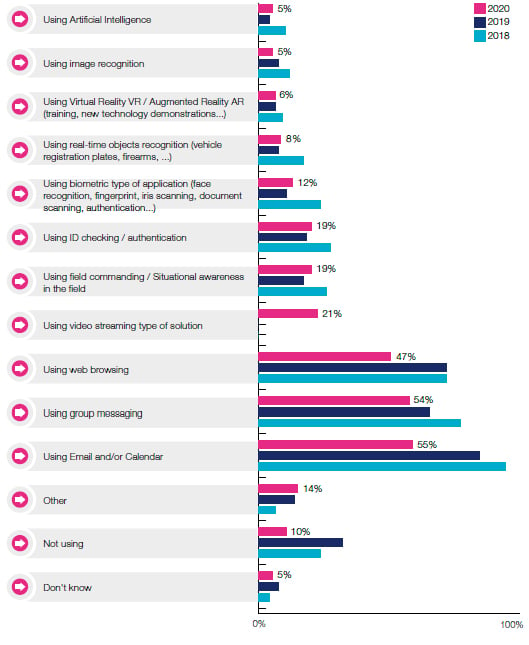 As a follow-up question, the respondents were also asked which apps they used. Email and/or calendar, group messaging and web browsing have been the most commonly used apps for the past three years. But around one in five said they used a ‘video streaming type of solution’ – which was a new response option this year.
As a follow-up question, the respondents were also asked which apps they used. Email and/or calendar, group messaging and web browsing have been the most commonly used apps for the past three years. But around one in five said they used a ‘video streaming type of solution’ – which was a new response option this year.
2 – Apps adoption is becoming more structured
Although the majority of participants (69%) personally downloaded apps to their device from generic app stores, this shows a 7% decrease from last year, when we asked this question for the first time.
Around a third (30%) reported using the organization’s app store, or that their organization pushes applications to devices, or that their IT/IM department takes responsibility for downloads – an 8% increase on last year.
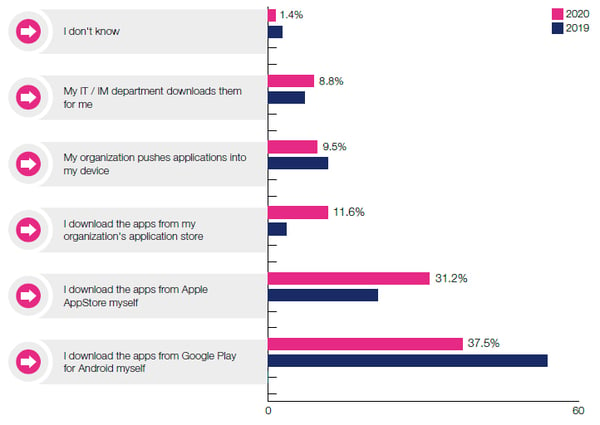
In other words, it seems that, although most users download apps from generic app stores, there is a trend towards a more structured approach to adopting apps.
3 – Key use cases: same, but new technologies emerging
People were also asked to choose three use cases for mobile apps that had the greatest potential. Group messaging, email/calendar and field command/situational awareness in the field received the most mentions, as they have done throughout the survey’s history. The support for group messaging and email/calendar is even increasing.
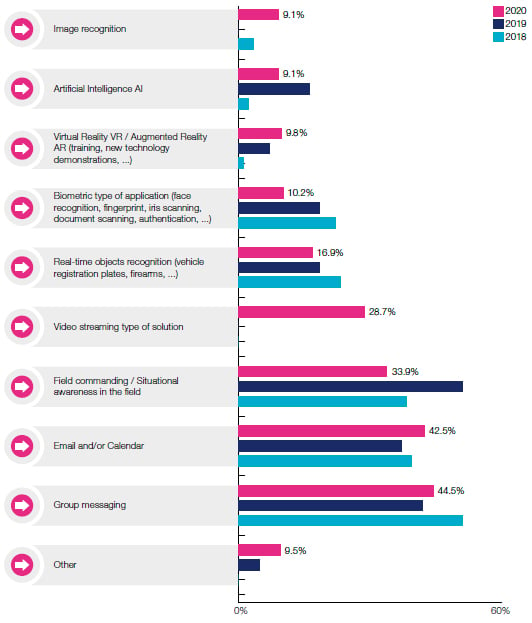
As a new response option this year, ‘video streaming type of solution’ was selected by 29% of respondents. In addition, 10% of respondents checked the VR/AR box while only 1% mentioned it in 2018. These numbers indicate that new technologies, such as VR/AR and AI, are gradually emerging.
4 – Two of the three most appreciated app characteristics differ from the requirements of mass market consumers
When asked about the most important mobile app characteristics, the survey respondents give very interesting answers. The following are the three standout characteristics of mobile apps that professional users value most:
- Security and ownership of data – control in own hands: 71% (highest percentage in survey history)
- High reliability and availability of the service: 63%
- Easy to use: 41%
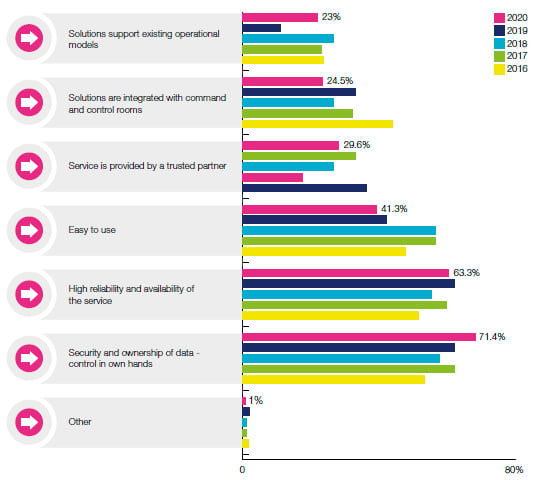
Security is becoming ever-more important as a critical characteristic for professional apps.
Interestingly, ease of use has been trending towards a lower priority in the last three years: from 59% in 2018, to 44% in 2019, to 41% in 2020.
Throughout the survey’s history, the top three characteristics have remained constant. The top two – which are on the rise – differ from the requirements of consumers in the mass market, who as a rule do not think much about data ownership. Consumer apps, therefore, do not meet the two most important needs and are not currently suitable for adoption in the professional marketplace.
What were the trends in 2022?
How do professionals use mobile apps today? What are the most important characteristics of mobile apps? What are the most potential use cases for new mobile apps? What is the next big thing in professional apps?
You will find the answers – and more – in the 2022 report of the annual Airbus survey on professional mobile apps. Download "Professional app trends 2022 - 37 things you wish you'd known earlier":
Editor's note: This blog post was originally published in November 2020, and it has since been updated with new information.


